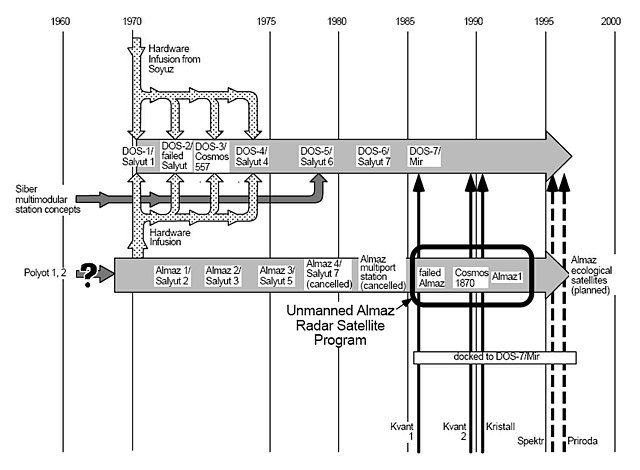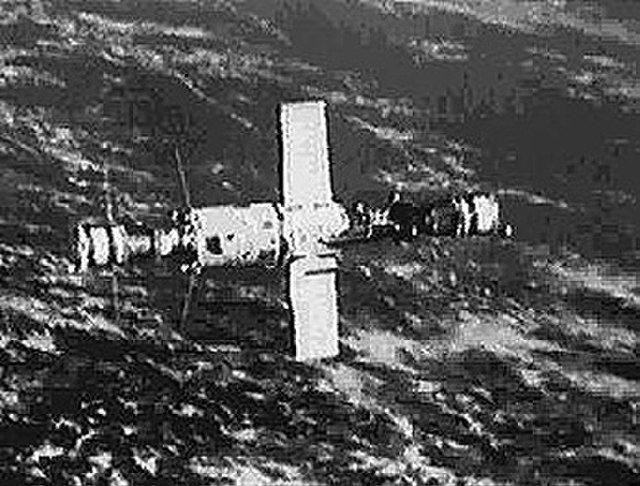Georgy Mikhaylovich Grechko was a Soviet cosmonaut. He flew to space on three missions, each bound for rendezvous with a different Salyut space station. Soyuz 17 was the first crewed vehicle to visit Salyut 4, Soyuz 26 was the first crewed vehicle to visit Salyut 6, and Soyuz T-14 visited Salyut 7. During the latter mission, Grechko helped to relieve the crew of Soyuz T-13, who had repaired damage to the station.
Grechko in 2011
The Salyut programme was the first space station programme, undertaken by the Soviet Union. It involved a series of four crewed scientific research space stations and two crewed military reconnaissance space stations over a period of 15 years, from 1971 to 1986. Two other Salyut launches failed. In one respect, Salyut had the task of carrying out long-term research into the problems of living in space and a variety of astronomical, biological and Earth-resources experiments, and on the other hand the USSR used this civilian programme as a cover for the highly secretive military Almaz stations, which flew under the Salyut designation. Salyut 1, the first station in the programme, became the world's first crewed space station.

Development of the Soviet space stations: The large horizontal arrows trace the evolution of the two Soviet space station programmes DOS (top) and Almaz-OPS (bottom) Dark gray arrows trace the infusions from the Soyuz and OPS programmes to DOS Solid and dashed black arrows indicate modules intended for Mir, containing influences from OPS with the addition of space tugs
Mockup of Soyuz and Progress spacecraft docked to Salyut 6, Moscow Polytechnical Museum
DOS-5 (Salyut 6) space station with two docked spacecraft
A full-scale model of a Salyut 7 space station and two docked spacecraft. On the left a Soyuz can be seen docked to the fore port, and on the right a Progress is docked at the aft port. The display is in front of one of the pavilions of the Exhibition of Soviet National Economic Achievement.





